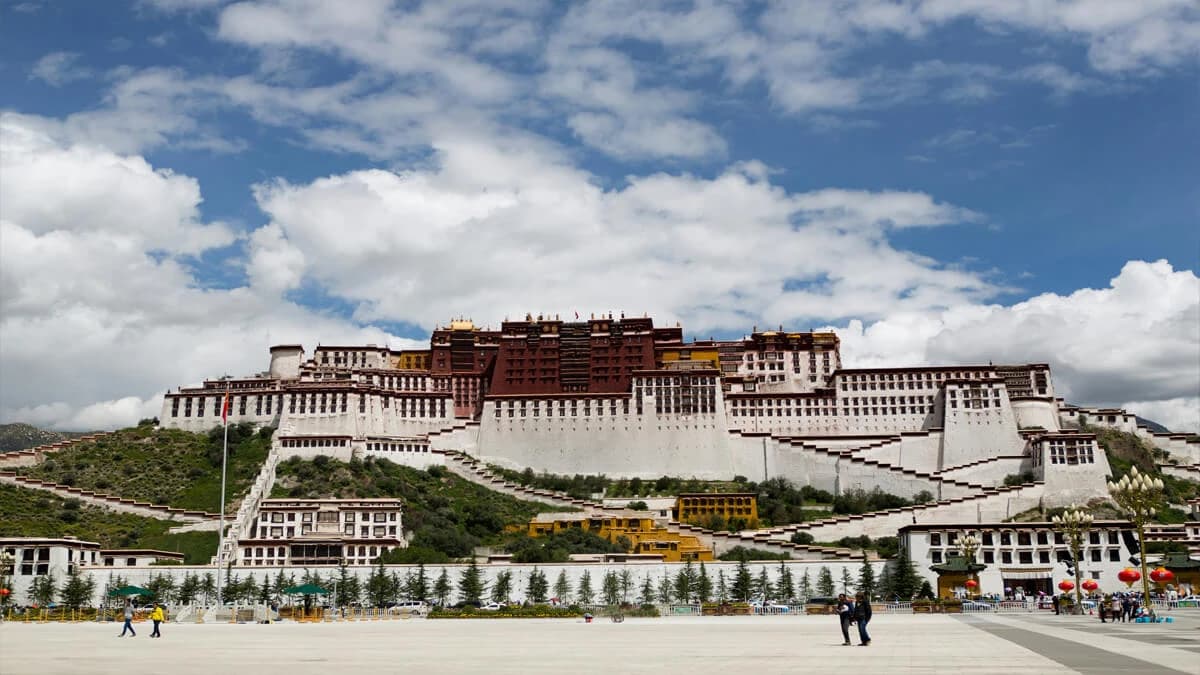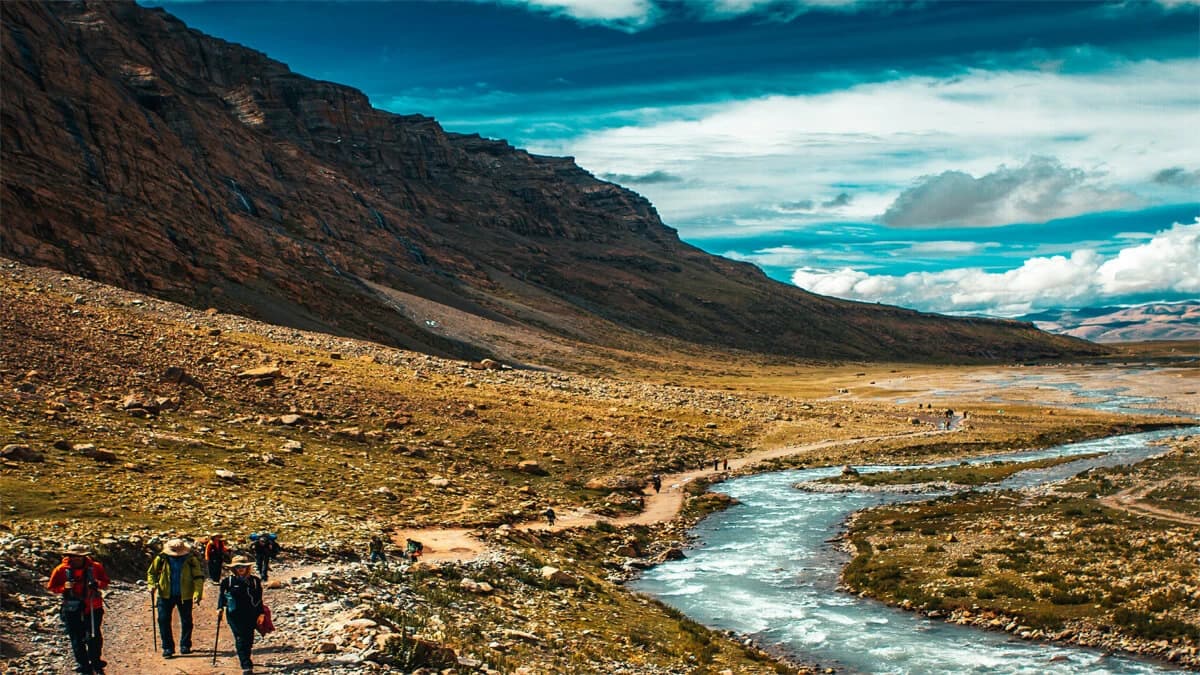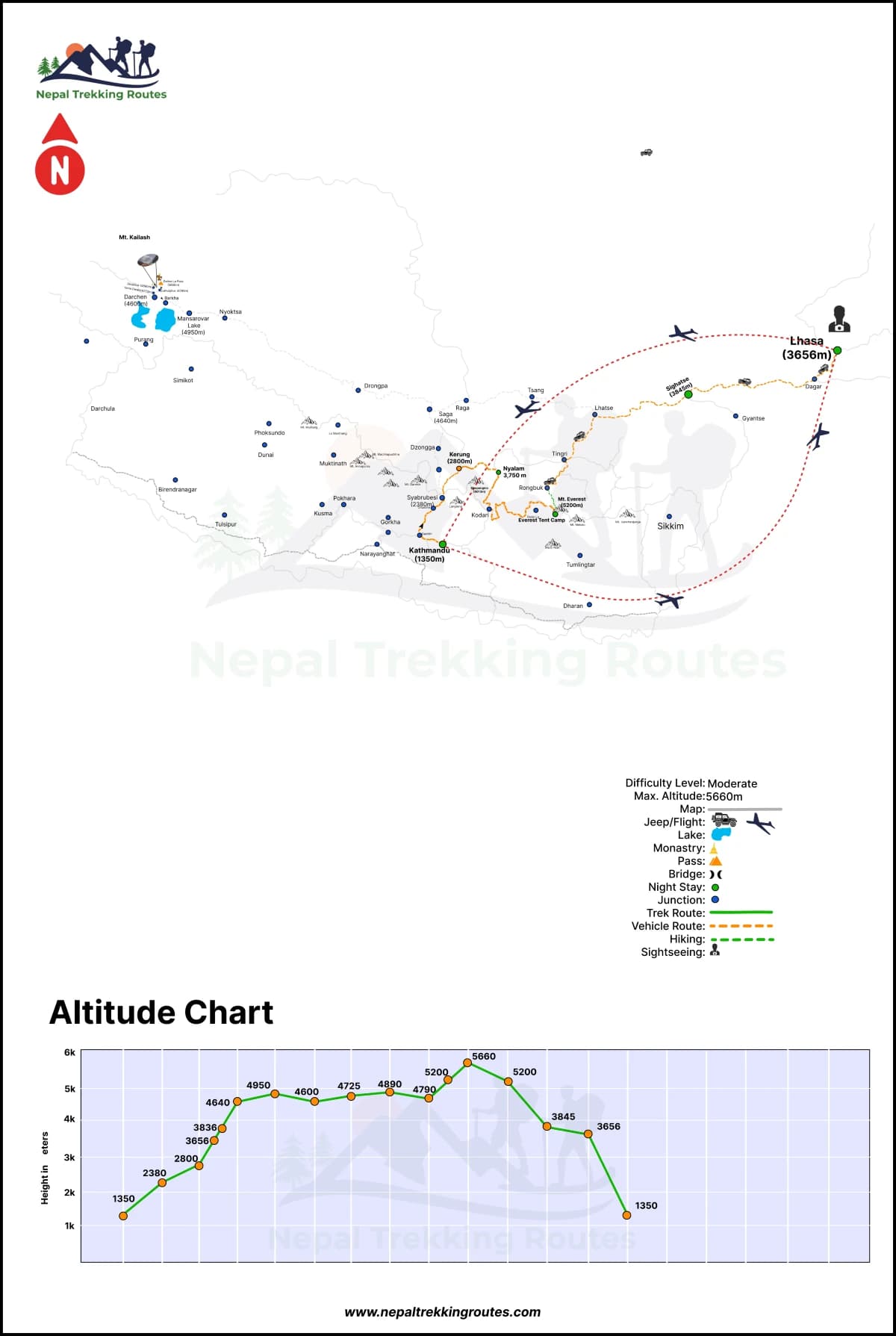Lhasa Everest Base Camp Tour Overview
The Lhasa Everest Base Camp Tour is a lifetime opportunity to experience the cultural wonders of Lhasa City and mesmerizing views from Everest. This 9-day Lhasa Everest Base Camp tour lets you see the colorful lakes, passes above 4,500 m, and captivating snowy peaks. Similarly, alpine villages and towns, and ancient monasteries carrying a long history of Tibetan Buddhism are other attractions of this Tibet tour package.
Most of the time of the EBC tour from Lhasa is spent while driving between the Lhasa Everest Base Camp Tour. You drive along the wonderful Friendship Highway relishing the wonderful natural scenery and socio-cultural sites of Tibetan Autonomous Province. In this 9-day itinerary of the Lhasa EBC tour, you visit the top three cities of Tibet: Lhasa, Shigatse, and Gyantse. When you reach Everest Base Camp from Shigatse, you explore the natural caves where nuns and monks go for peaceful retreats.
Tibet World Heritage Site of Lhasa Tour
Historical and cultural sites like Potala Palace and Norbulingka Palace were built by the Dalai Lamas and now have been popular tourist destinations. The Summer Palace of the Dalai Lamas between 1649 and 1959, Potala Palace is one of the UNESCO World Heritage Sites of Tibet. Norbulingka Palace, the Winter Palace of the contemporary time, is the highest, oldest, and most protected horticultural garden in the world. Meaning “Treasure Garden or Treasure Park”, this palace has included man-made plus natural green meadows full of forest in its area.
Lhasa Everest Base Camp Tour is a part of the Lhasa Day Tour that takes you around the three main Gelug University Gompas: Drepung Monastery, Sera Monastery, and Genden Monastery. The Tibetan Buddhist art and artifacts including mural paintings, and Buddha idols are other fascinating features to attract thousands of tourists yearly. Shalu Monastery, Tashi Lunpo Monastery, and Rongbuk Monastery which is eight kilometers away from EBC are also worth visiting holy places. One of the most well-conserved dongs (fortresses) of Tibet, Gyantse Dzong reflects Tibetan History during the expansion era. This fortress constructed in 1390 AD, would build three kilometers long to protect Gyantse and Lhasa from the enemies.
The highest place one can reach except climbing Mount Everest, the Tent Camp is an optional lodging area during the summer season. The eye-catching vistas of eight-thousanders: Mt. Everest, Mt. Lhotse, Mt. Cho Oyu, and Mt. Shishapangama make your Lhasa Everest Base Camp Tour more meaningful. Guru Rinpoche Cave, which is just 1 kilometer away from the Everest Tent Camp, is also a must-visit place around the base camp of Qomolangma. It is believed that Padhma Sambhava meditated in this cave and got enlightened, so, it is a sacred Buddhist natural site.




